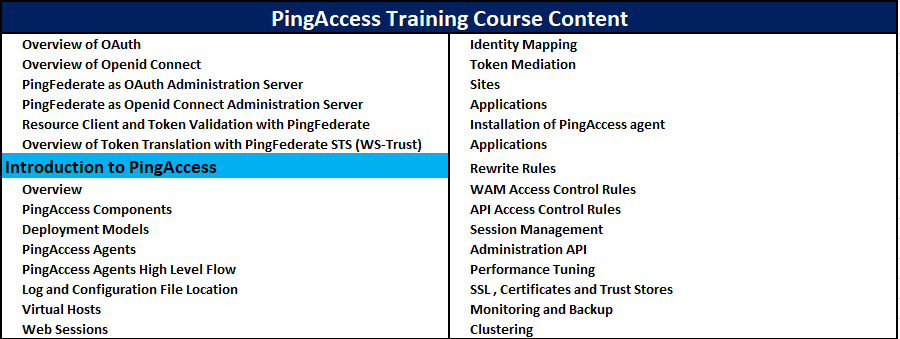Customize your identity access management configuration with the following features:
- Apply policies
- Use policies, made up of rules, set of rules, or groups of rule sets applied to an application and its resources, to define how and when a client can access target sites. Rules are the building blocks for access control and request processing.
- Backup and restore
- Backup or restore a PingAccess configuration with just a few clicks.
- Configure a token provider
- You can configure PingAccess to use PingFederate as the token provider or to use a common token provider through the OAuth 2.0 or OpenID Connect (OIDC) protocols.
- Configure administrator authentication
- Allow administrators to authenticate with a simple username and password, or configure them to authenticate using single sign-on (SSO) or API in conjunction with PingFederate.
- Configure advanced network settings
- Create an availability profile to determine how you want to classify a target server as having failed, configure listener ports, define a load balancing strategy, or use HTTP requests to match a served resource with the originating client.
- Configure logging
- Capture several log types, including those for the engine, security auditing, and cookies. Store logs in Splunk, in an Oracle, PostgreSQL, or SQL Server database, or in a file.
- Configure Single Logout
- End PingAccess sessions easily when used in conjunction with PingFederate managed sessions or compatible third party OIDC providers.
- Create clusters
- Deploy PingAccess in a clustered environment to provide higher scalability and availability for critical services. Use subclusters to provide better scaling of large PingAccess deployments by allowing multiple engine nodes in the configuration to share information. Place a load balancer in front of each subcluster to distribute connections to the nodes in the subcluster.
- Customize PingAccess look and feel
- Customize and localize the PingAccess pages your users will see, including those for error messages and logout confirmation.
- Customize with SDKs
- Customize development with SDKs to extend the functionality of the PingAccess server.
- Manage certificates and key pairs
- Import certificates to establish trust with certificates presented during secure HTTPS sessions. Import or generate key pairs that include the private key and X.509 certificate required for HTTPS communication.
- Manage sessions
- Use web sessions to define the policies for web application session creation, lifetime, timeout, and scope. Use multiple web sessions to scope the session to meet the needs of a target set of applications. Web sessions improve the security model of the session by preventing unrelated applications from impersonating the end user.
- Manually configure runtime parameters
- Use a text editor to modify configuration file settings used by PingAccess at runtime.
- Protect an application or API
- Use PingAccess to protect the application and API resources to which client requests are forwarded. Partition applications for tighter access control through the use of resources. Customize configuration of site authenticators and authentication requirements to suit the security needs of your organization.
- Tune performance
- Optimize a wide variety of PingAccess components for maximum performance.
- Upgrade an existing installation
- Easily upgrade an existing installation using the installer, or more carefully manage the upgrade process with the PingAccess upgrade utility.
- Use APIs
- Use the PingAccess APIs to provide a powerful configuration and management experience outside the PingAccess user interface.



